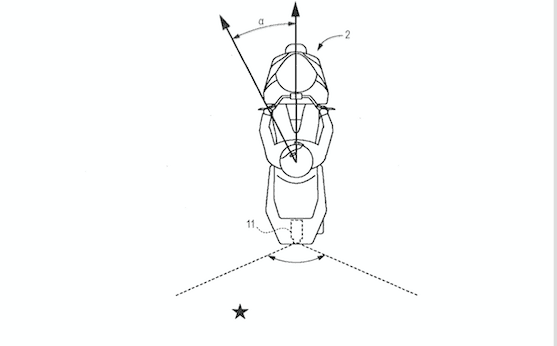Head-up display helmets are attracting major bike brands as well as helmet manufacturers, with the likes of BMW already having shown prototype versions. Now Suzuki has also jumped aboard the bandwagon.
The tempting prospect of being able to pipe up-to-the-minute information about speed, navigation and even phone calls straight into a rider’s eye-line is one that few companies are ignoring.
And Suzuki plans to take the concept further, with patents revealing the company also plans to replace conventional rear-view mirrors with an in-helmet display from a camera.
Despite its apparent simplicity, it’s actually a clever concept.
Rear-view cameras attached to dash-mounted displays are an age-old idea. Many a concept bike has sported them, along with plenty of custom-made specials.
However, cameras and monitors have some clear disadvantages compared to mirrors. Perhaps the most important is that you have no control of the field of view. With a mirror, you can move your head up, down, left and right to see more. A camera and display wouldn’t have that facility.
Suzuki spotted that problem and aims to solve it by mounting its rear-view camera – which is on the tail of the bike rather than being attached to the helmet –
on a gimbal that allows it to
move. Sensors built into the helmet, along with the HUD, measure its movement and position, so by looking around you’ll also move the rear-view camera and change the image it projects into the HUD.
To make things look more familiar, the Suzuki patent explains that the image from the camera will be flipped, so you’ll see a mirror-image in the display, just as you would with conventional mirrors.
All this might beg the question, why not stick with mirrors? Many probably will for years to come. However, when tied in to future safety systems that will monitor the positions of vehicles around you and keep a virtual eye on blind spots, the incorporation of cameras in this way starts to make a little more sense.

Why now?
In most countries now it’s illegal to rely on camera-display systems, which is one reason why the old-fashioned mirror has remained vibrating on our ’bars for so long. But in Japan rules are changing to allow cameras and monitors to be used instead of mirrors, and it’s a move that other countries are expected to also adopt in the future.
By Ben Purvis











